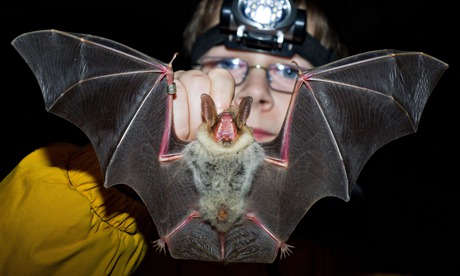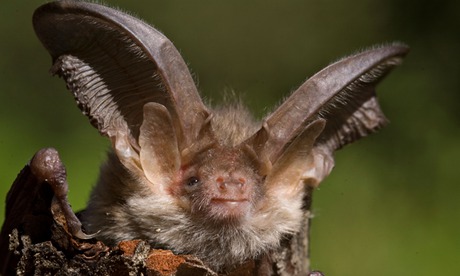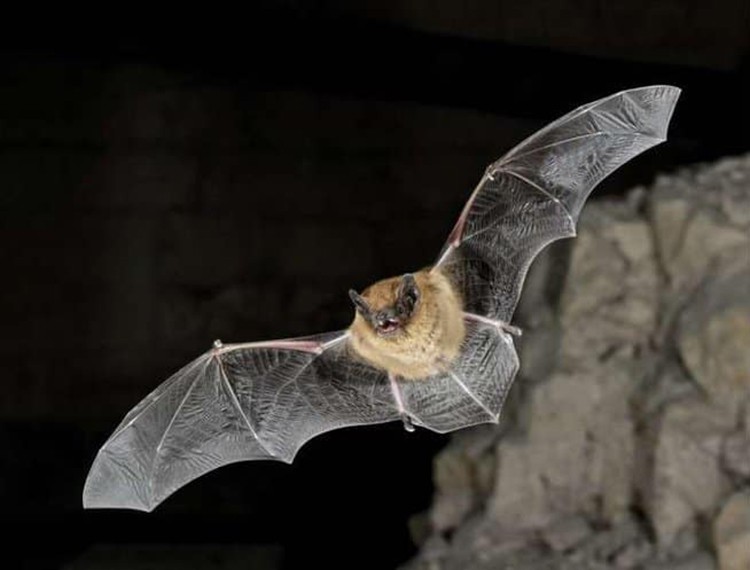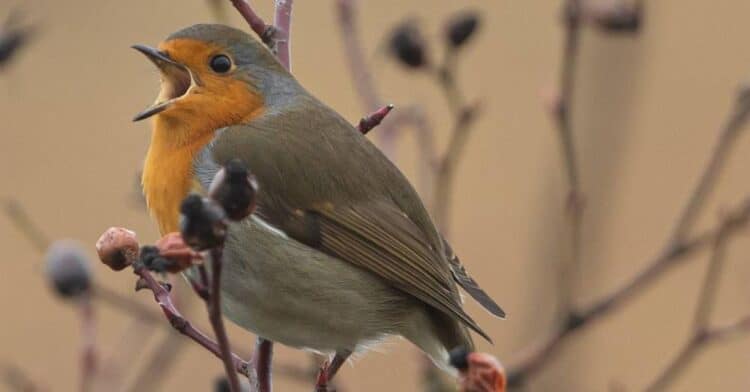European bat numbers are recovering after years of decline, according to a wide-ranging study published yesterday. Scientists surveyed 16 European bat species in nine countries, including Britain, and found that the total number increased by more than 40% between 1993 and 2011.
Conservation measures including legislation and managing habitats have helped to reverse the decline, but bats should “still be considered vulnerable”, with current populations still likely to be smaller than they were before the decline set in, the report from the European Environment Agency (EEA) found.
In the most comprehensive study of European bat population trends to date, surveyors counted and catalogued bats hibernating at 6,000 sites in Austria, Germany, Hungary, Latvia, the Netherlands, Portugal, Slovakia, Slovenia and the UK.
Most of the species studied appear to be increasing or stable in number. Eight bat species increased moderately, including Daubenton’s bat (Myotis daubentonii).
The whiskered bat and Brandt’s bat (Myotis mystacinus/brandtii) are so difficult to tell apart that they are counted together. These were the only species to register a strong increase in numbers between 1993 and 2011, according to the survey. Three were stable, two species were uncertain and only the grey long-eared bat (Plecotus austriacus) declined, although moderately.
“It is extremely encouraging to see bat populations increasing after massive historic declines,” EEA executive director, Hans Bruyninckx, said.
“It suggests that targeted conservation policies over the last years have been successful. But many bat species are still endangered, so preserving their habitats is still an important priority. Monitoring bats also helps understand changes in wider ecosystems, including climate change, as they are highly sensitive to environmental change.”

The most recent figures from the UK national bat monitoring programme show that the species of most concern in Britain is the grey long-eared bat, an incredibly rare species with fewer than 1,000 individuals and only eight known summer roosts. Species that have fared well are the lesser and greater horseshoe bats. Both have increased significantly, with the lesser horseshoe thought to have been helped by a series of mild winters and the greater horseshoe from agricultural conservation measures including more sensitive management of hedgerows and habitats around roosts.
Dr Karen Haysom, director of science at the UK Bat Conservation Trust, said: “Understanding population change is an essential step in planning and implementing effective conservation. For the first time it enables countries such as the UK to see trends in their own bat populations in the context of how bats are faring across Europe. Bats are monitored widely in Europe and we would like to expand this prototype indicator to include and represent many more countries and bat species.”
European bat populations declined significantly – particularly during the second half of the 20th century – because of intensive agriculture, changes in land use, intentional killing and destruction of roosts. Bat numbers have also been affected by loss of habitat and poisoning from toxic chemicals used to treat timbers in the roofs where they roost.
Bats tend to be long‑lived animals with a slow rate of reproduction, meaning environmental or human pressures can cause their numbers can decline very rapidly and recover slowly. They are also extremely sensitive to environmental change, which means they act as an early indicator of climate change. Differences in temperature, for example, can affect their ability to forage, reproduce and hibernate.
Haysom said the introduction in the 1980s of the first UK and European laws to protect bats in their roosts had been a “very important measure”, but that education had changed attitudes to their conservation.
“There are lots of myths and misunderstandings around bats – people used to think they got tangled in their hair, or worried about disease, they were thought of as pests. Before bats were protected there was a lot of fear and suspicion and dislike but now people know more about them, they are more inclined to help. We do think with bats generally that because they were so actively harmed with so many pressures before protection that these measures must have had a lot to do with the changes we are starting to see.”
This article was written by Jessica Aldred for The Guardian. Lead Image: Brown long-eared bat, (Plecotus auritus). Photograph: Zefiryn Pągowski /Alamy.







Leave a Reply